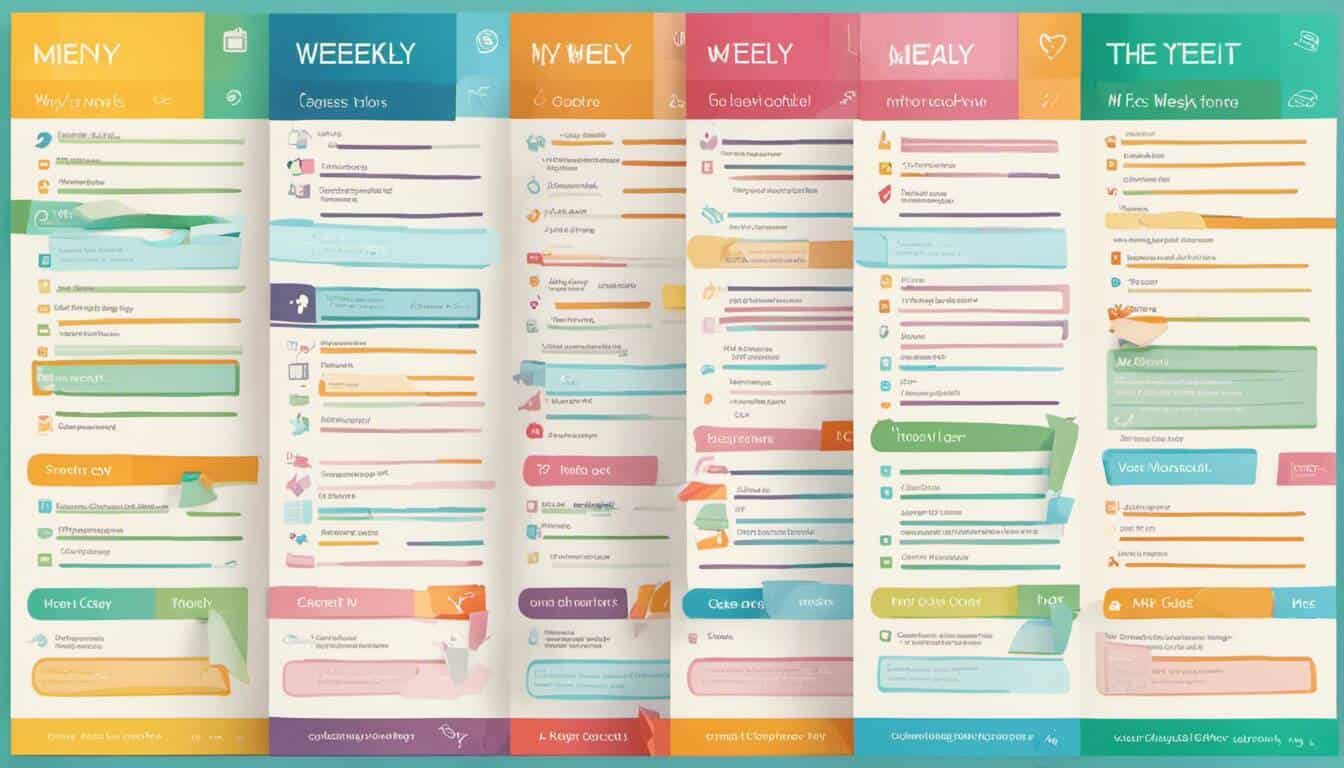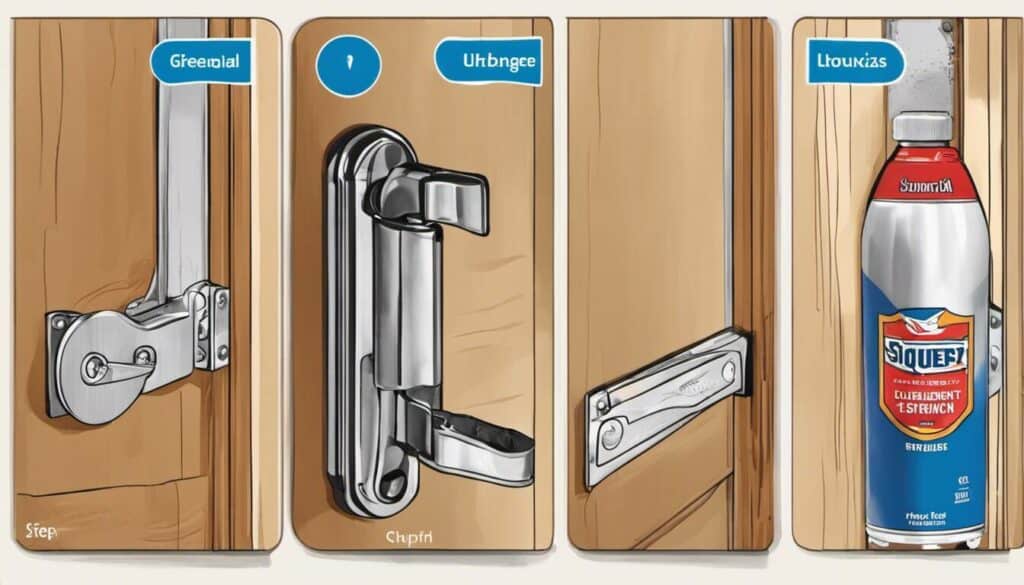Here’s how I maintain my home that stays clean, ultra-functional, and ever-ready to welcome esteemed guests at a moment’s notice. I share my simple yet effective weekly Home TLC checklist, turning home maintenance from dreaded chores into manageable bit-sized tasks. With these essential cleaning and maintenance tips, every corner of my house gleams with pride and durability. Stick around; you’re about to make your housekeeping routine surprisingly easier and enjoyable!
Our My Weekly Home TLC Checklist is a comprehensive guide for maintaining and tidying your home on a regular basis. It includes daily, weekly, monthly, and seasonal tasks to ensure that your home stays clean and organized. Some examples of tasks on the list include washing dishes, wiping down surfaces, vacuuming floors, cleaning toilets and bathrooms, dusting furniture, changing air filters, watering plants, and organizing clutter. By using our checklist consistently, you can ensure that your home is always in top condition without feeling overwhelmed or overburdened with too much work at once.

“Your home is your fortress and it deserves the same meticulous attention we give to our personal health. The essence of a successful home maintenance regimen lies in a proactive approach. Weekly monitoring, timely cleaning, and regular maintenance of common areas, such as the kitchen, bathroom, or living areas, as well as ensuring that household systems and appliances are functioning optimally, is the key to a happy, healthy home.”
Paxton Traver, Professional Home Care Consultant
Setting Up Your Weekly Cleaning Schedule
Setting up a weekly cleaning schedule is crucial for keeping your home tidy and well-maintained. By creating a routine, you can establish consistency and avoid overwhelming cleaning tasks while potentially reducing long-term cleaning costs. Start by assessing your household’s needs and determining which areas require regular attention. Consider factors like the size of your home, the number of occupants, and specific cleaning requirements based on individual preferences or allergies.
For instance, if you have children or pets, you may need to focus more on vacuuming and dusting to keep allergies at bay. Once you have identified the essential cleaning tasks, allocate specific days for each chore. This approach allows you to spread out the workload throughout the week, making it more manageable and preventing exhaustion from tackling everything at once.
Now that we’ve discussed how to set up your weekly cleaning schedule, let’s explore effective strategies for maximizing your time spent on cleaning and maintenance.
Maximizing Time for Cleaning & Maintenance
Cleaning and maintaining your home can sometimes feel like an arduous task, especially when juggling other responsibilities. However, with proper planning and organization, you can optimize your time and make the most out of each cleaning session. Here are a few strategies to help you maximize your time for cleaning and maintenance:
1. Prioritize Tasks: Begin with the most critical or time-consuming tasks first. Addressing these tasks early in your cleaning session ensures that they are completed without rushing or compromising on quality.
For example, if you know that deep-cleaning the bathrooms usually takes more time, start there before moving on to quicker tasks like dusting or sweeping.
2. Gather Proper Tools: Before you begin cleaning, gather all the necessary tools and supplies in one central location. This prevents unnecessary trips back and forth to fetch items, saving valuable time.
Having tools such as microfiber cloths, multipurpose cleaners, and a well-stocked cleaning caddy readily available streamlines the process and eliminates interruptions during your cleaning routine.
3. Multitask: Look for opportunities to multitask while cleaning. For instance, when waiting for a cleaning agent to work on one surface, use that time to tackle another task nearby. This efficient use of time helps you accomplish more in less time overall.
An example of multitasking could be wiping down kitchen countertops while waiting for the stove cleaner to dissolve grease buildup.
4. Break Tasks into Manageable Chunks: Instead of overwhelming yourself with lengthy cleaning sessions, break your tasks into smaller, more manageable chunks. Set timers for each task, such as ten minutes for decluttering or fifteen minutes for vacuuming specific areas. By tackling small portions consistently throughout the week, you’ll maintain cleanliness without feeling overwhelmed.
Breaking tasks down also allows you to fit them into your schedule more easily, making it feasible even on busy days.
With these tips in mind, you can create an efficient and effective cleaning routine that maximizes your time and keeps your home looking its best.
- To make the most out of cleaning and maintenance, prioritize tasks, gather proper tools in one location, multitask by completing tasks close to one another, and break larger tasks down into more manageable chunks. By following these strategies, you will optimize the time spent cleaning and maintain a clean home without overwhelming yourself.
Essential Home Maintenance Weekly Steps
Keeping your home in good shape requires regular maintenance and care. By incorporating a few essential weekly steps into your routine, you can ensure that your home remains clean, organized, and functional. These tasks help prevent minor issues from escalating into major problems and maintain the overall condition of your living space.
One crucial aspect of weekly home maintenance is cleaning. This includes activities like dusting surfaces, vacuuming or mopping floors, cleaning windows and mirrors, and wiping down countertops and appliances. Regular cleaning not only keeps your home looking its best but also helps maintain a healthy environment by reducing dust and allergens.
Another important step is maintenance. This involves checking for any signs of wear or damage and addressing them promptly. For example, inspecting and cleaning gutters to prevent clogging, checking for leaks or drips in plumbing fixtures, testing smoke detectors and carbon monoxide alarms, and ensuring that all doors and windows are secure and functioning properly. These preventive measures can save you time, money, and stress in the long run by avoiding larger repair issues.
Remember that regular maintenance also extends to the outdoor areas of your home. This might include tasks such as mowing the lawn, weeding garden beds, trimming bushes or trees, and clearing debris from walkways or driveways. These tasks are especially important when preparing your home for winter. Outdoor maintenance contributes to the curb appeal of your property while also protecting it from potential hazards.
Identifying Safety & Security Needs
Safety and security should be top priorities when it comes to maintaining your home. By identifying potential risks and taking necessary precautions, you can create a safe environment for yourself and your loved ones.
Start by assessing the entry points of your property. Are all doors sturdy with working locks? Do windows have proper locking mechanisms? Consider enhancing security measures by installing deadbolts, peepholes, or security cameras if needed.
Next, prioritize fire safety. Ensure that smoke detectors are installed on every level of your home and near bedrooms. Regularly test these devices and replace batteries as necessary. Additionally, inspect fire extinguishers to ensure they are within the expiration date and easily accessible in case of emergencies.
To protect against burglary, evaluate your home’s current security features. Consider installing an alarm system or reinforcing doors and windows with additional locks or security film. Adequate outdoor lighting can also deter potential intruders.
For instance, motion-activated lights near entryways or pathways can make your property less appealing to would-be trespassers.
Finally, don’t forget about emergency preparedness. Have a designated meeting point and an emergency kit stocked with essentials like flashlights, first aid supplies, and non-perishable food items. This preparation is particularly crucial when preparing your home for long trips. Familiarize yourself with emergency procedures for natural disasters common to your area, such as earthquakes, hurricanes, or tornadoes.
By proactively identifying safety and security needs and taking appropriate measures, you can have peace of mind knowing that your home is a secure haven for you and your family.
Prioritizing Health-Related Cleaning Activities
When it comes to maintaining a clean and healthy home, it’s essential to prioritize certain cleaning activities that directly impact your health and well-being. By focusing on these tasks, you can create a safer living environment for you and your loved ones. Let’s explore some key areas to consider when prioritizing health-related cleaning activities.
One crucial aspect is regular handwashing, especially during flu seasons or in times of contagious illnesses. Proper hand hygiene helps prevent the spread of germs and reduces the risk of infection. Make sure to wash hands before preparing food, after using the restroom, or returning home from public places.
Additionally, keeping frequently touched surfaces clean is vital in preventing the spread of bacteria and viruses within your home. These surfaces include doorknobs, light switches, countertops, and electronic devices. Regularly disinfecting them with appropriate cleaning agents can help eliminate harmful pathogens.
Another health-related priority is maintaining cleanliness in areas prone to moisture, such as bathrooms and kitchens. Moisture attracts mold and mildew growth, which can contribute to respiratory issues and allergies. Regular cleaning, including quick floor cleaning tips, can help prevent these issues. Pay special attention to regularly cleaning tiles, grout, showerheads, sinks, and kitchen appliances to prevent any potential health hazards.
By giving priority to these health-related cleaning activities, you are taking proactive steps towards creating a safe and healthy living environment for you and your family.
- A study by Scrubbing Bubbles revealed that up to 50% of Americans don’t have a regular house cleaning routine or checklist.
- According to the National Cleaning Institute, only 28% of Americans regularly deep clean their homes, suggesting the need for a comprehensive weekly checklist.
- A survey by America’s Cleaning Product Industry found that 33% of Americans don’t feel they know enough about how to clean effectively and efficiently, hence the use of tools like the weekly TCL checklist could be beneficial.
Regular Home Health Check-ups
Our homes are our sanctuaries, but they can sometimes harbor hidden issues that affect our health without us realizing it. Regular home health check-ups are essential to identify potential problems and take appropriate action. Let’s explore why scheduling these check-ups is crucial for maintaining a healthy home.
One aspect of regular home health check-ups involves assessing air quality. Poor indoor air quality can lead to various respiratory problems like asthma or allergies. Consider testing for pollutants such as dust mites, mold spores, or volatile organic compounds (VOCs). Improving ventilation and regularly changing air filters can help mitigate these risks.
Another important step is checking for any signs of water damage or leaks. Water intrusion can lead to mold growth, which can be detrimental to both your respiratory health and the structural integrity of your home. Inspect areas like basements, crawl spaces, and bathrooms for any signs of moisture or staining. Promptly address any issues and consider hiring professionals if necessary.
Regular pest control is another crucial aspect of home health check-ups. Pests not only pose a threat to your property but can also carry diseases. Conduct routine inspections for signs of infestation, such as droppings or gnaw marks, and take appropriate measures to eliminate pests and prevent their return.
By conducting regular home health check-ups and addressing any issues proactively, you can ensure a safe and healthy living environment for yourself and your family.
Planning and Executing Repairs
When it comes to maintaining your home, planning and executing repairs in a timely manner is essential. Waiting too long to address issues can result in more significant problems and potentially costly repairs down the line. By taking a proactive approach, you can save yourself both time and money in the long run.
For instance, imagine noticing a small leak in your bathroom faucet. Ignoring it may lead to water damage, mold growth, or even structural issues. However, by promptly fixing the leak, you can prevent further damage and avoid more extensive repair costs.
It’s important to regularly inspect your home for any signs of wear or potential problems. Create a schedule to check essential areas such as plumbing systems, electrical wirings, roof condition, and foundation stability. This way, you can catch any issues early on and plan repairs accordingly.
Maintaining a list of trusted contractors or handyman services is also prudent. When repairs are needed, having reliable professionals at your disposal ensures that the job will be done efficiently and effectively.
Now that we understand the importance of planning and executing repairs promptly, let’s delve into how organizing repairs can enhance their efficiency and effectiveness.
Organizing Repairs for Efficiency & Effectiveness
Whether you are managing minor repairs or tackling bigger renovation projects, organizing them effectively can make a significant difference in terms of efficiency and effectiveness.
Firstly , start by prioritizing the repairs based on urgency and importance. Assess which issues need immediate attention versus those that can wait a bit longer. This step helps you allocate your time and resources effectively, ensuring that critical repairs are addressed first.
For example, if you have a leaky roof causing water damage inside your home, it should take precedence over repainting the walls. Allocating your resources accordingly will help prevent further damage while still allowing for cosmetic improvements down the line.
Next , consider grouping similar repairs together. This approach can optimize your efficiency by minimizing travel time and allowing you to complete tasks more quickly. For instance, if you need to fix several leaky faucets in different areas of the house, tackle them all on the same day to avoid unnecessary back-and-forth trips.
Lastly , maintain clear communication with contractors or handyman services. Clearly articulate the issues that need attention and provide as much detail as possible. This will help ensure that they come prepared with the necessary tools and materials, reducing delays and increasing the effectiveness of the repairs.
By planning and executing repairs in a timely manner and organizing them effectively, you can keep your home in optimal condition while avoiding excessive costs and stress. Now, let’s explore other essential cleaning and maintenance tips for your weekly TLC checklist.





As an individual who values cleanliness and order above all else, I’ve spent several years crafting my maintenance routine, probably enough to write a book about it! The satisfaction from ridding one’s abode of dust and entropy results in enormous mental peace and contentment. Interestingly, I find cleaning therapeutic as it helps declutter not just your surroundings but your mind while setting you up for success in other areas of life too. More often than not, people underestimate the power of a clean environment; they would be surprised at how much positivity and productivity it could usher into their lives.
I couldn’t agree more with you, Gravely – the underestimated power of cleanliness and its impact on mental peace is something I’ve been championing for years, and it’s therapeutic nature is something I absolutely echo. It’s much less about the act itself but about the discipline and control it brings to life.
Though I’ve admittedly seen my share of cluttered days throughout my banking career, believe me when I tell you – there’s something inherently comforting about the order that meticulous cleaning brings to life, it’s almost synonymous with therapy after a trying day at work.
[POSITIVE EXPERIENCE] My bed-and-breakfast gives me not only an avenue to channel this penchant for neatness but also an opportunity to provide a tranquil haven for tired travelers; hence I couldn’t agree more with how life fulfilling routine cleaning can be.
Even though I’ve been keeping my little home shipshape for decades now, there’s still an unparalleled satisfaction in the gleam of a freshly polished table or the inviting coziness on a well-made bed!
Just like tuning an old piano, housekeeping also needs frequent little tweaks rather than large-scale overhauls – my home seems to sing melodiously when I practice weekly TLC.